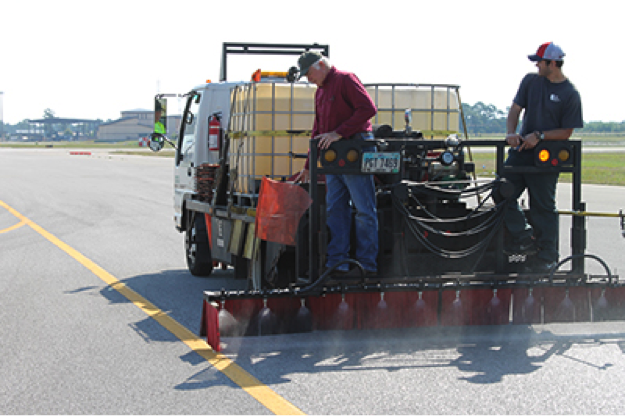Soy Cleans Up on Bioremediation Projects
The environmental benefits of soy-based products have long been cited, but using soy for bioremediation projects takes environmental benefits one step further. Bioremediation is a process that uses bacteria to clean up toxic chemicals that have polluted soil and groundwater. Soy now provides a powerful new natural option in anaerobic bioremediation to clean up groundwater. The United Soybean Board (USB) and the soybean checkoff helped work with researchers to develop the bioremediation process that includes soy.
“The proven Edible Oil Substrate (EOS®) technology substantially reduces the cost to restore contaminated aquifers,” says Gary Birk, EOS Remediation. “The technology has successfully turned land once deemed unusable into productive and safe real estate.”
Soybean oil stimulates in situ anaerobic biodegradation of groundwater contaminants. After soybean oil is added to an aquifer, it helps generate anaerobic activity and ferments to hydrogen and low-molecular-weight fatty acids. The soybean oil provides carbon and energy for the anaerobic microorganisms that facilitate the desired remediation yielding non-toxic end products. In situ anaerobic biodegradation is used at commercial, industrial, military and other governmental sites throughout the United States and the world.
Since being developed in 1999, EOS technology has been widely accepted as a primary commercial treatment method by the environmental consulting and contracting industry. The process is designed to stimulate the anaerobic biodegradation and transformation of a wide variety of chlorinated solvents and energetic materials into nontoxic end products. Because of the naturally slow degradability of the soybean oil, one application lasts well in excess of three years, making it one of the most sustainable, green remediation technologies on the market.
“The soybean oil in the EOS process provides energy for the microbes over a longer period without rejuvenation,” says Birk. “EOS can feed microbes for three to five years, which is often long enough to clean up a contaminated site.”
Today, millions of pounds of soybean oil are used in bioremediation on an annual basis. One supplier of soy oil emulsion products estimates the current U.S. bioremediation market to be about $1 billion per year. Soy-based products are being used on 200-300 cleanup sites.
“Though the concept of bioremediation is several decades old, the groundwater remediation industry in North America is still in its growth stageand has boomed in recent years,” says Birk. “The market for soy-based bioremediation products should continue to grow in the future, due to their proven track record, sustainability and cost-effectiveness at restoring contaminated aquifers.”

